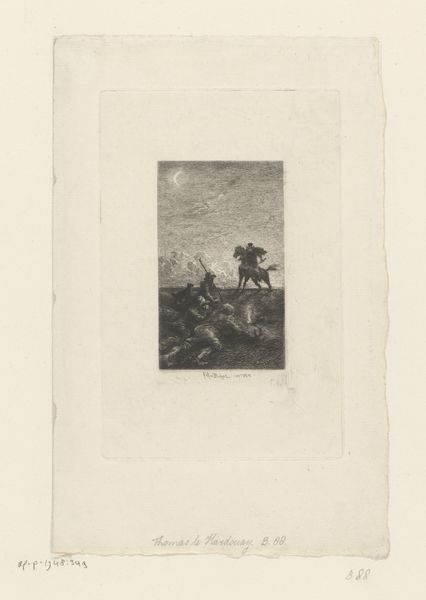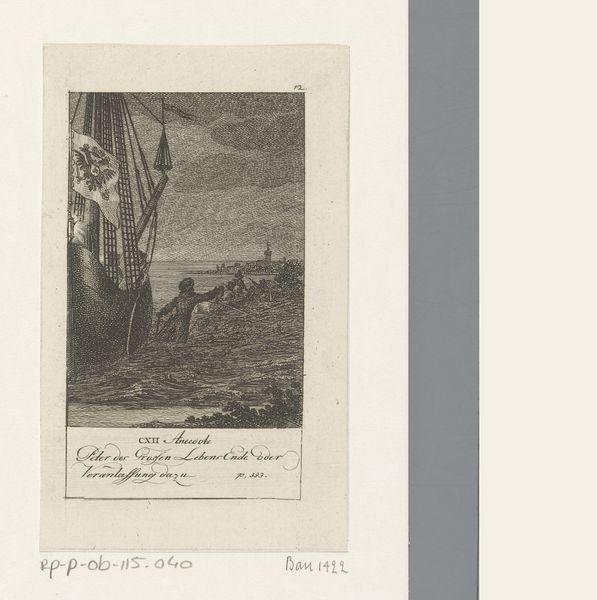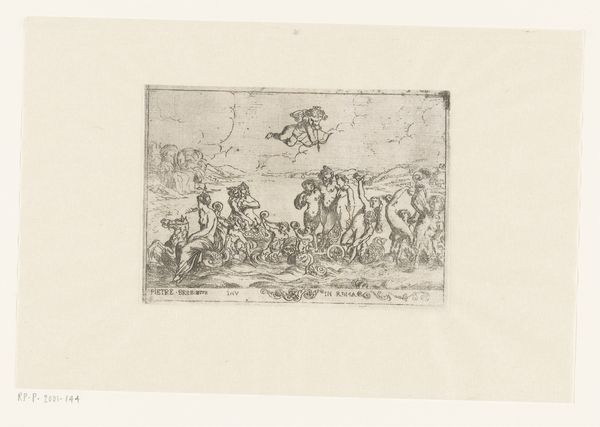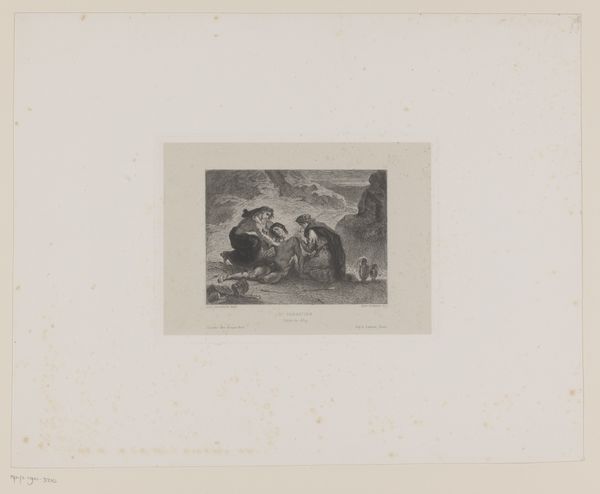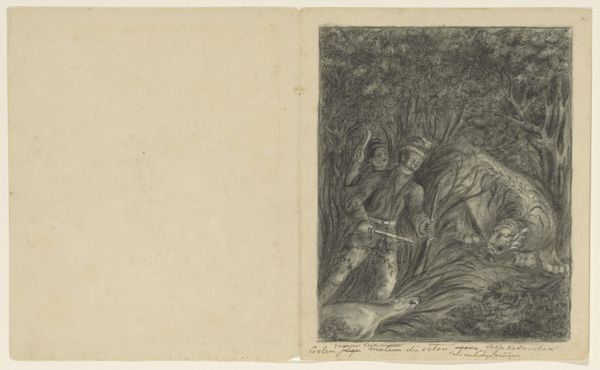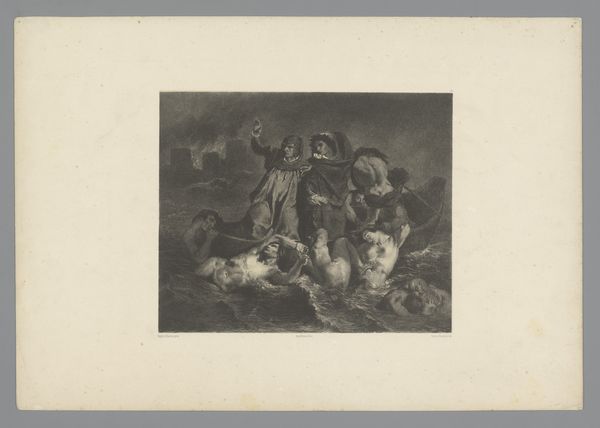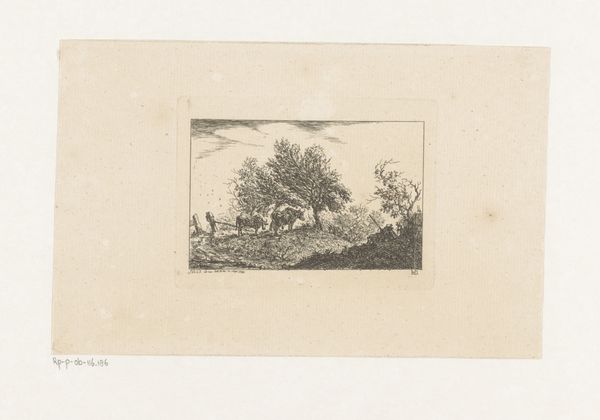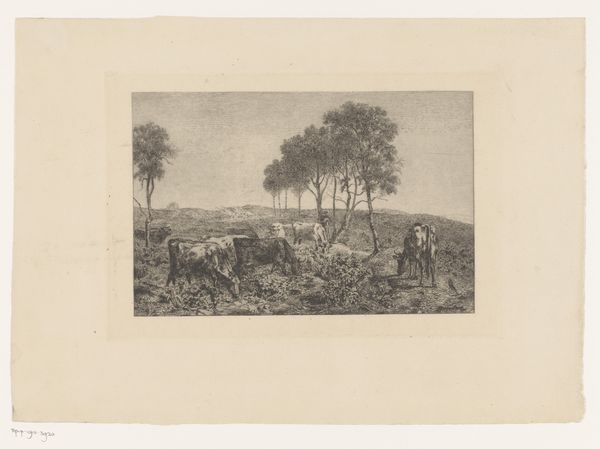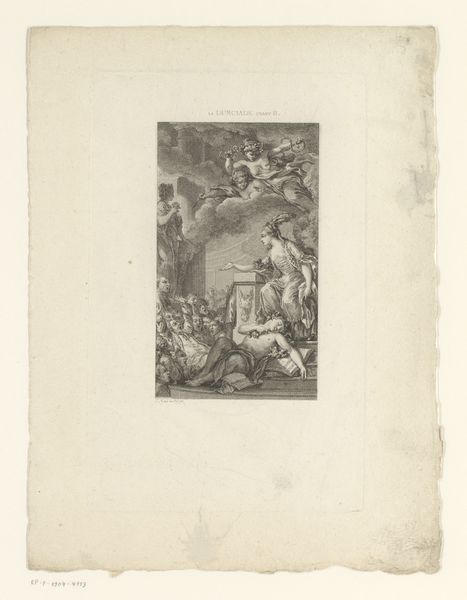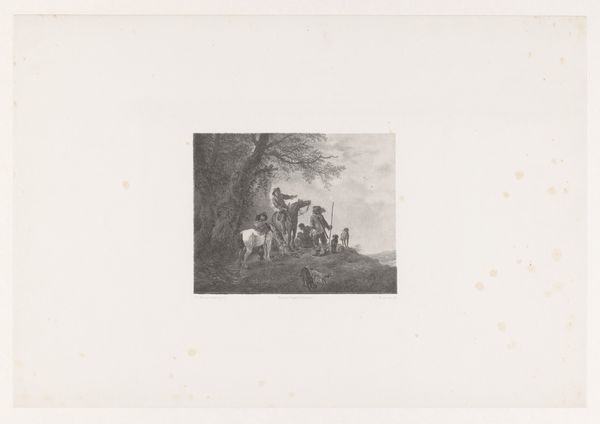
Dimensions: height 117 mm, width 63 mm
Copyright: Rijks Museum: Open Domain
Curator: What first strikes me about this image is its frenetic energy—the chaos, almost like a fever dream rendered in miniature. Editor: Indeed. What you're sensing is visualized quite literally: it is titled "Steigerend paard met ruiter in een gevecht," or "Rearing Horse with Rider in Combat," and it’s an 18th-century engraving. We don't know who made it. What resonates for me is not only its action, but its participation in a long history of glorifying violence through representation. Curator: Right, the visual rhetoric of war. Though anonymous, there's a virtuosity here, don't you think? The way the artist suggests depth, layering figures, weaponry…almost like a surging wave. It’s troubling, but arresting. I keep wondering who these people are? Is this one of those historical depictions trying to show us "good versus evil"? Editor: We could see it as another chapter in the epic poem of warfare. But beyond the technical prowess, which I recognize, let's also ask what this image actively *does.* Anonymous production aside, who did this work serve? Was this piece perhaps meant as a rallying cry? Remember, the 18th century was a cauldron of revolution and shifting colonial powers. I'd bet the purpose isn't pure aesthetic pursuit. Curator: I am always tempted to project a story into these pieces, but your argument is such an important reminder of its power as a historical object. There’s a push-and-pull. And, oh, it definitely serves some political or cultural agenda, though what it may be exactly? Editor: And that tension is generative. It reminds us that images don't exist in a vacuum. Even an "anonymous" work carries ideological weight, intended or otherwise. It can spur us into thinking what hasn’t changed over the centuries! What combat actually looks like and, more importantly, whom it serves, what bodies are sacrificed, how? Curator: Agreed. It’s tempting to get lost in technique, but situating within broader structures of power—yes, it enriches and complicated my own viewing experience! Editor: Yes! So, next time you gaze upon a "history" painting, consider the silences—whose story isn’t being told, whose hand was behind the engraving needle, and, perhaps most importantly, how its meaning shifts through the eyes of those doing the looking.
Comments
No comments
Be the first to comment and join the conversation on the ultimate creative platform.
